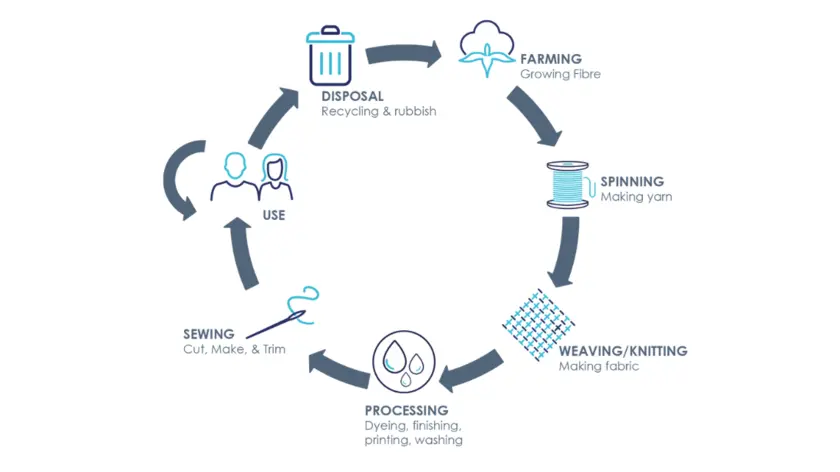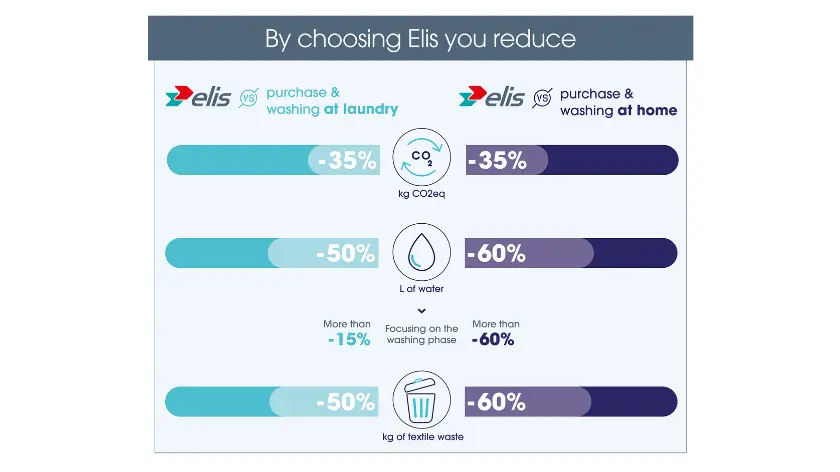The environmental benefits of the Elis model
Analyzing the life cycle of a workwear outfit
The product as a service business model is at the core of Elis’ business model. Renting and maintenance services of textiles are deeply embedded in our DNA. We are convinced of the benefits of our business model and its capacity to offer more sustainable solutions to our customers.
To demonstrate this and to understand significant environmental aspects of the products and services provided to our customers, in 2023/2024 Elis has carried out a comparative Life Cycle Analysis (LCA) of workwear for „Providing the wearer with a clean, dry working outfit 5 days per week, every week for 4 years’ service“.

The LCA comparing renting and purchasing
The LCA compares 3 cleaning scenarios of a full workwear outfit (jacket and trousers) throughout its whole life cycle: the circular service model based on garment rental and laundry with scenarios where garments are purchased and cleaned at home or purchased and cleaned by a laundry service.
Environmental calculator
This innovation highlights the tangible environmental benefits of rental and maintenance services.
How does it work?
In just a few clicks, specify the service duration and the number of wearers… and the calculation is done! You can also download the results in PDF format. Try it now!
Key results
Our rental and maintenance model has a significantly lower environmental impact compared to purchasing. The study emphasizes the importance of extending the lifespan of garments to reduce their carbon footprint.
Thanks to the Elis model, which keeps products in use longer (lifespan extension, repairs, reuse...), CO₂ emissions can be reduced by up to 35%.
-
A circular model offers significant environmental benefits compared with purchasing textiles and washing at home or at a laundry cleaning service.
-
The study highlights the importance of reducing the number of garments produced and stresses the potential of circular models to achieve this goal.
-
The circular service provided by Elis has a lower impact on all indicators studied in this LCA compared to washing at home or at a laundry cleaning service.

-
The methodology
If you need information or a quote for your project, our teams are here to help. Contact us!
*Required fields
Account details








